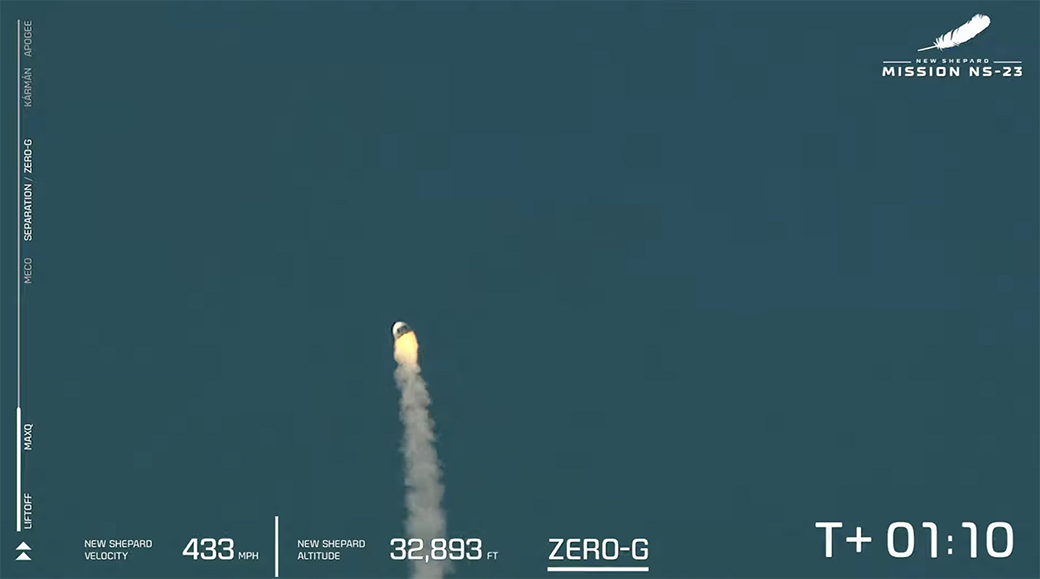
A Blue Origin New Shepard suborbital booster failed during an uncrewed Sept. 12 launch due to structural fatigue on the engine nozzle about 1 min. after liftoff, the company said March 24.
“The structural fatigue was caused by operational temperatures that exceeded the expected and analyzed values of the nozzle material,” Blue Origin said in a statement.
Testing later showed that the BE-3PM engine nozzle had been operating at higher temperatures than previous flights. Blue Origin had flown New Shepard vehicles 22 times previously, including six crewed missions.
Forensic evaluation of the recovered nozzle fragments showed clear evidence of thermal damage and hot streaks resulting from increased operating temperatures. “The fatigue location on the flight nozzle is aligned with a persistent hot streak identified during the investigation, the company said.
The increased nozzle heating and hot streaks are due to design changes in the engine’s boundary layer cooling system, the accident investigation determined.
“Blue Origin is implementing corrective actions, including design changes to the combustion chamber and operating parameters, which have reduced engine nozzle bulk and hot-streak temperatures,” the company said. “Additional design changes to the nozzle have improved structural performance under thermal and dynamic loads.”
Flights, which were suspended after the accident, are due to resume before the end of the year, Ariane Cornell, vice president of commercial and international sales, said at the Satellite 2023 conference in Washington earlier this month.
The NS-23 mission, which carried only payloads and no passengers, marked the company’s first inflight failure since the reusable, vertical-launch and vertical-landing system debuted in 2015. The booster in that mission crashed on landing.





